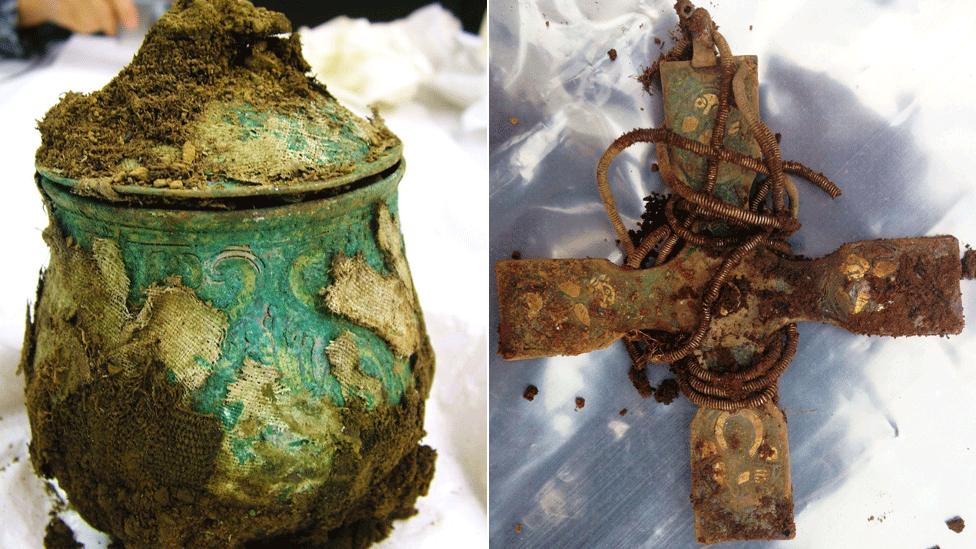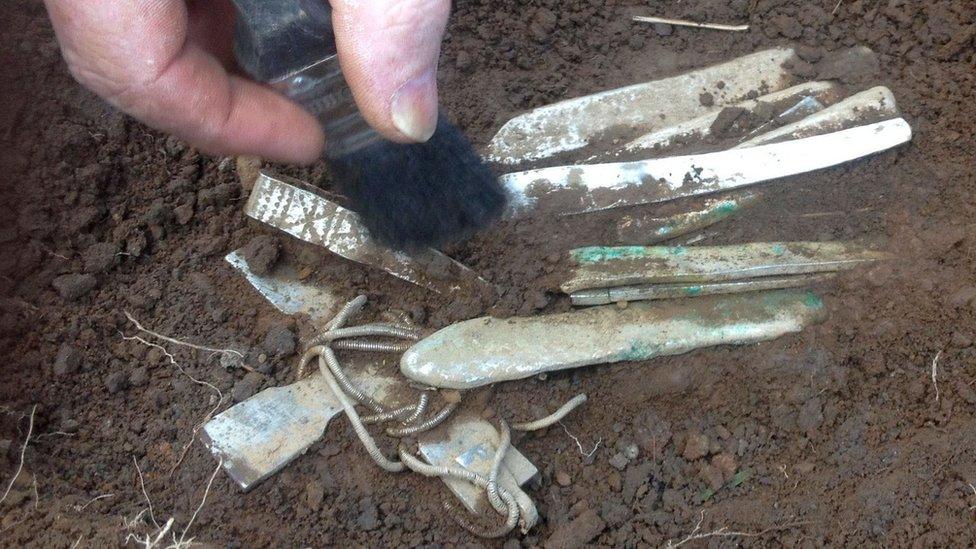Galloway Viking hoard finder criticises delay in putting items on display
- Published

A metal detectorist has spoken out about the fate of a Viking treasure hoard he discovered in Galloway.
A campaign has been launched to ensure the items are put on display in a new art gallery in Kirkcudbright.
However, National Museums Scotland is also bidding for the artefacts which could see them end up in Edinburgh.
Derek McLennan, from Ayrshire, found the items and said he felt it had taken "far too long" to find a home for such an important discovery.
He told BBC Scotland: "The Galloway hoard is a world-class treasure which Scotland should be proud to have in any of its museums.
"I have noticed the rather prominent Galloway Viking Hoard (GVH) campaign and all the coverage in the local and Scottish national press.
"I am as interested as everyone else as to when, where and how long it is all going to take before Scotland and the UK's public, along with the wider international community, will eventually be able to see all the astonishingly precious artefacts from within the hoard."

Mr McLennan unearthed the treasure in 2014
He said the process of putting the items on display could take some time.
"There may, of course, have to be an extensive period of conservation and cleaning before this pre-eminent collection of treasures from the Viking and Anglo-Saxon era could be fully displayed in all their incredible beauty," added Mr McLennan.
"At the moment, the artefacts have only been stabilised by conservators as dictated by the treasure process in Scotland and some remain almost fully enclosed in their ancient textile wrappings.
"In fact, I am not sure if the museum which is eventually successful in its application to curate this incredible treasure will wait to display all the artefacts prior to the much-needed conservation and cleaning work, as is usually the case in the English Treasure Trove system."
Mr McLennan said he hoped the items could go on display in their entirety.
"It would be a great pity if the hoard was initially displayed in part only and the most iconic pieces with their breathtaking beauty are simply drip-fed into the public domain," he said.
"Unfortunately, in my opinion, if the eventual reveal and marketing of this national treasure was conducted in such a piecemeal manner, it would not allow the dramatic global impact the Galloway hoard, along with its potentially significant effect on Scotland's tourist industry, demands and deserves."
'Lavished with praise'
Mr McLennan was critical of the time it had taken to reach the stage of making a decision on its future.
"The Galloway hoard was found on 1 September 2014 and is still not in a museum; the process has taken far too long," he said.
"I am quite certain that many Scots and a good deal more people from the rest of the UK, are not really aware of the Galloway hoard and yet it rivals any of those found in the UK.
"It is only fair that it should be treated in the same manner as those discoveries made in England, which are lavished with praise and receive extensive press coverage before being allocated to a museum.
"Sadly, this has not been the case with the Galloway hoard, though I'm sure it will be eventually."
The Scottish Archaeological Finds Allocation Panel (SAFAP) is due to meet to discuss the hoard's future on 23 March.
- Published9 February 2017
